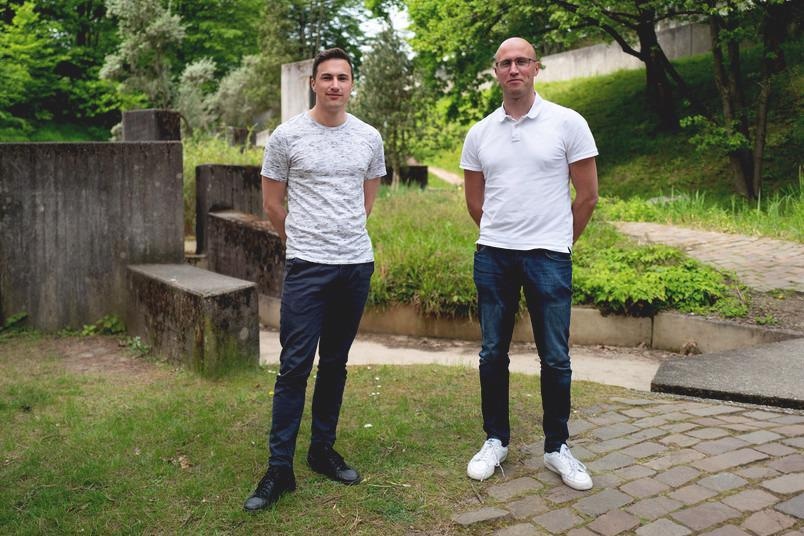Dopamine is a vital nerve cell signaling chemical. Until now, it was impossible to properly quantify its concentration with both high spatial and temporal resolution.
 Sebastian Kruss (right) and Björn Hill are part of the team that was able to directly measure the neurotransmitter dopamine. Image Credit: Ruhr-Universität Bochum, Kramer.
Sebastian Kruss (right) and Björn Hill are part of the team that was able to directly measure the neurotransmitter dopamine. Image Credit: Ruhr-Universität Bochum, Kramer.
This is now feasible with a new method that utilized modified carbon nanotubes that radiate brighter in the presence of the messenger molecule dopamine. This method was employed by a research team from Bochum, Göttingen, and Duisburg.
These sensors provide a high-resolution view of dopamine release from nerve cells.
Professor Sebastian Kruss of Ruhr-Universität Bochum’s Physical Chemistry Department and Dr. James Daniel of the Max Planck Institute for Multidisciplinary Sciences in Göttingen, as well as Professor Nils Brose of the Max Planck Institute for Multidisciplinary Sciences in Göttingen, report on this in the journal PNAS on May 25th, 2022.
Fluorescence Changes in the Presence of Dopamine
Dopamine is a neurotransmitter that regulates the reward center of the brain, among other things. If such a signal transmission ceases to work, conditions such as Parkinson’s disease can develop. Furthermore, substances like cocaine modify molecular signals, which play a role in substance abuse problems.
However, until now there was no method that could simultaneously visualize the dopamine signals with high spatial and temporal resolution.
Sebastian Kruss, Head, Functional Interfaces and Biosystems Group, Ruhr-Universität Bochum
This is where the cutting-edge sensors come in handy. They work with ultra-thin carbon tubes that are 10,000 times thinner than human hair. They glow in the near-infrared spectrum with wavelengths of 1,000 nanometers and greater when exposed to visible light.
Kruss added, “This range of light is not visible to the human eye, but it can penetrate deeper into tissue and thus provide better and sharper images than visible light.”
Furthermore, in this range, there are significantly fewer background signals that might affect the outcome.
“We have systematically modified this property by binding various short nucleic acid sequences to the carbon nanotubes in such a way that they change their fluorescence when they come into contact with defined molecules”, stated Kruss.
Kruss’ team transformed carbon nanotubes into small nanosensors that selectively attach to dopamine and glow more or less brightly depending on the amount of dopamine present.
He further stated, “We immediately realized that such sensors would be interesting for neurobiology.”
Coating Healthy Nerve Cells with a Sensor Layer
To make this possible, the sensors must be placed near active neural networks. Dr. Sofia Elizarova and James Daniel of the Max Planck Institute for Multidisciplinary Sciences in Göttingen created cell culture conditions that allow nerve cells to stay healthy while being coated with a very thin layer of sensors.
For the first time, the researchers were able to see individual dopamine release events throughout neural structures and acquire insight into dopamine release processes.
Kruss, Elizarova, and Daniel are optimistic about the new sensors’ potential.
They provide new insights into the plasticity and regulation of dopamine signals. In the long term, they could also facilitate progress in the treatment of diseases such as Parkinson’s.
Dr. Sofia Eizarova, Max Planck Institute for Multidisciplinary Sciences
Furthermore, other sensors are being created with which additional signaling molecules can be made visible to recognize diseases, among other things.
Journal Reference:
Eizarova. S, et al. (2022) A fluorescent nanosensor paint detects dopamine release at axonal varicosities with high spatiotemporal resolution. PNAS doi:10.1073/pnas.2202842119.